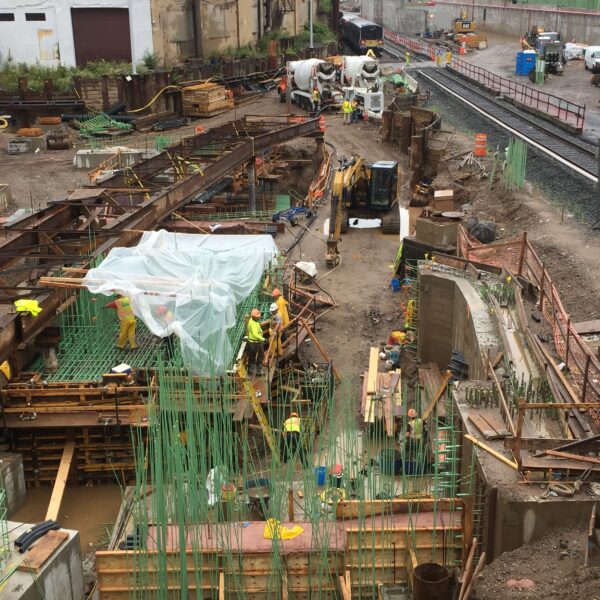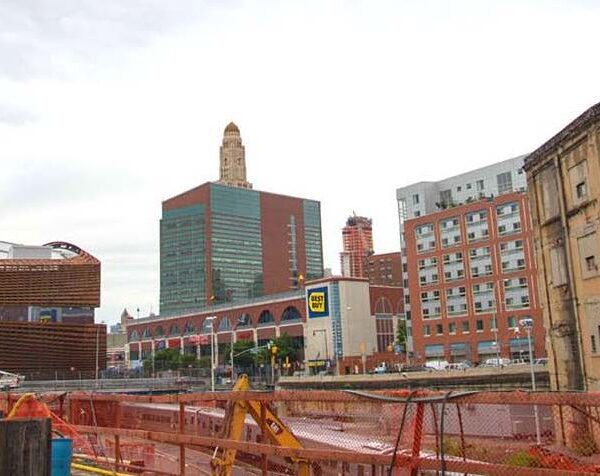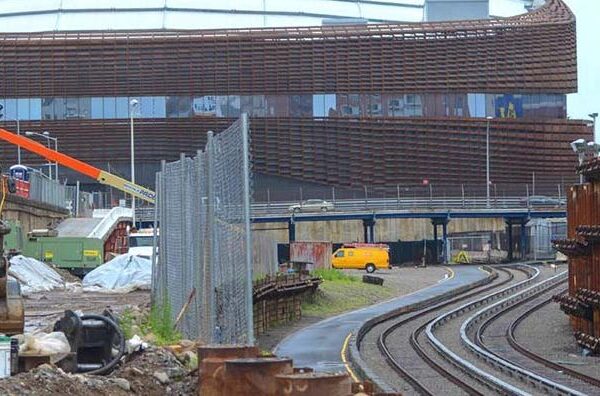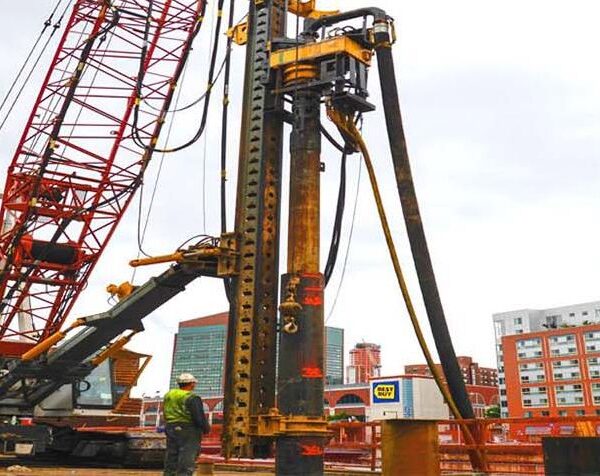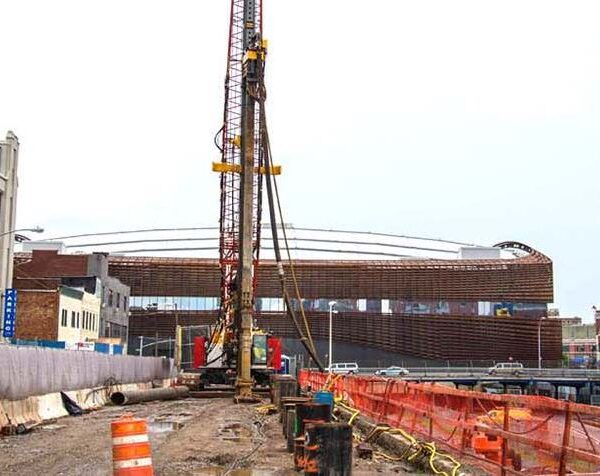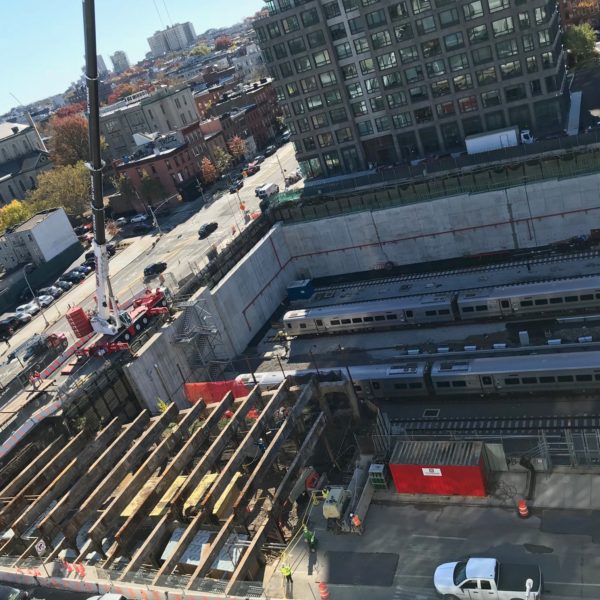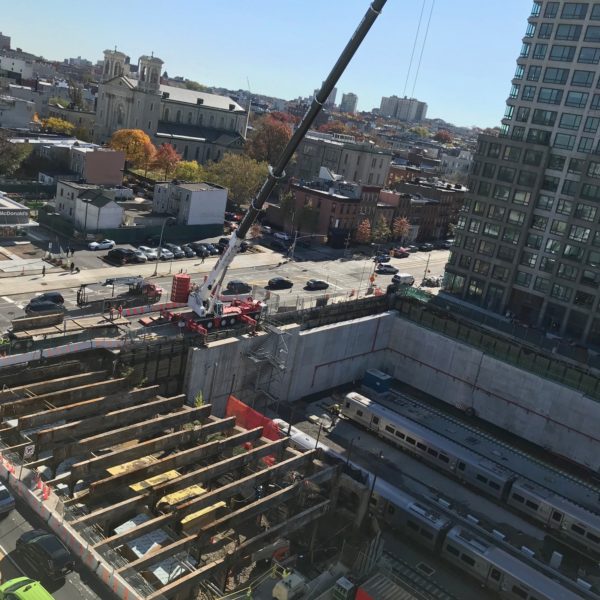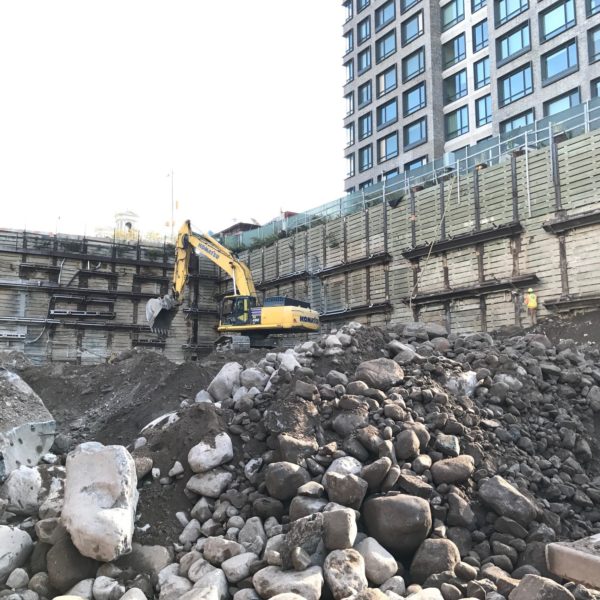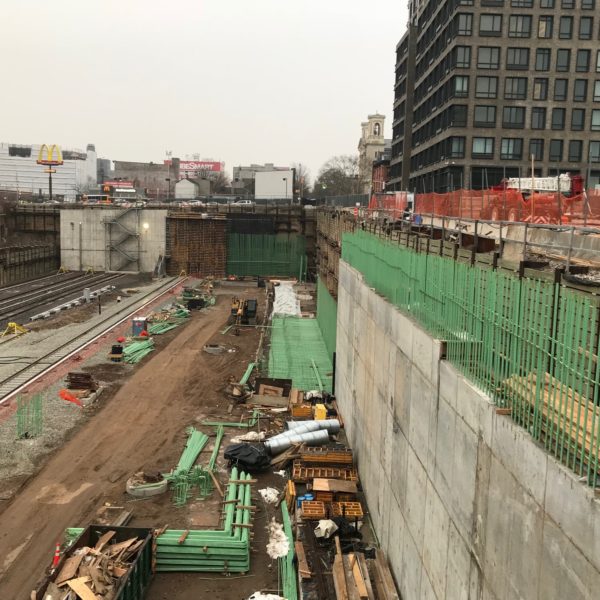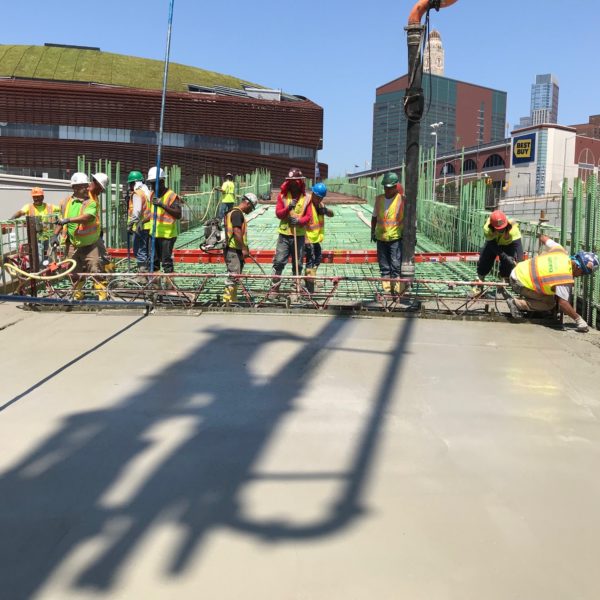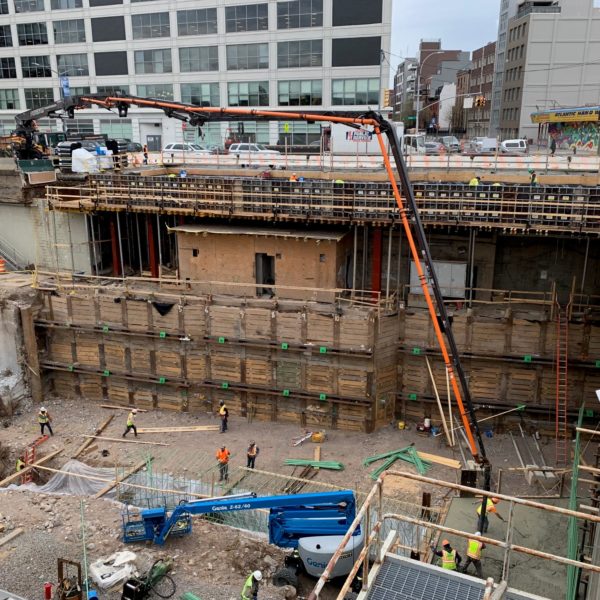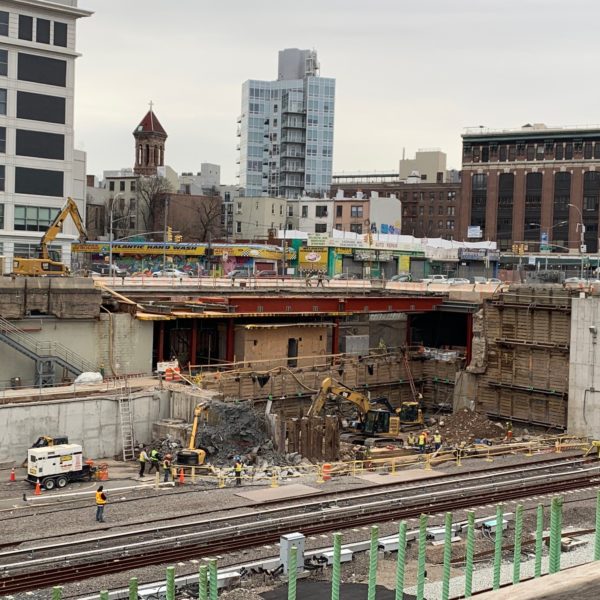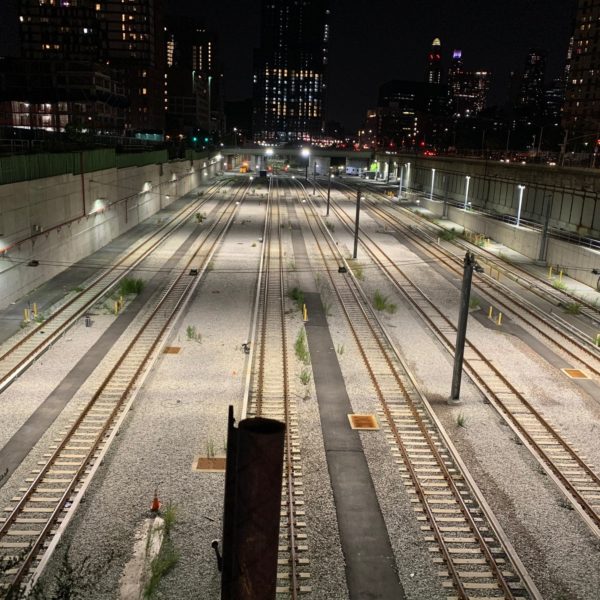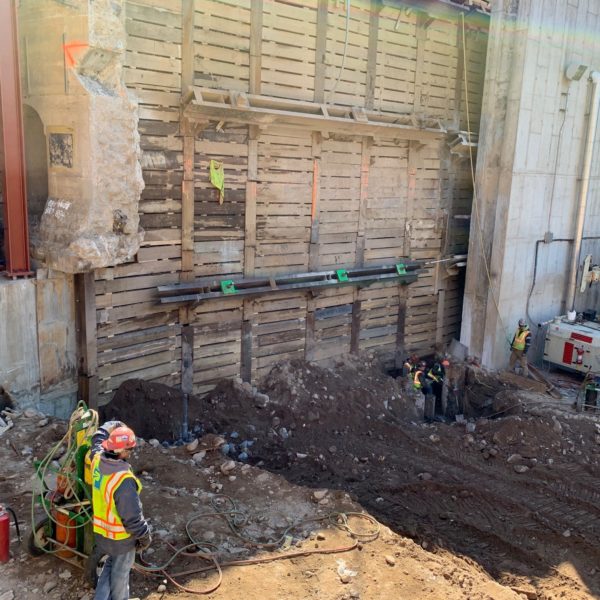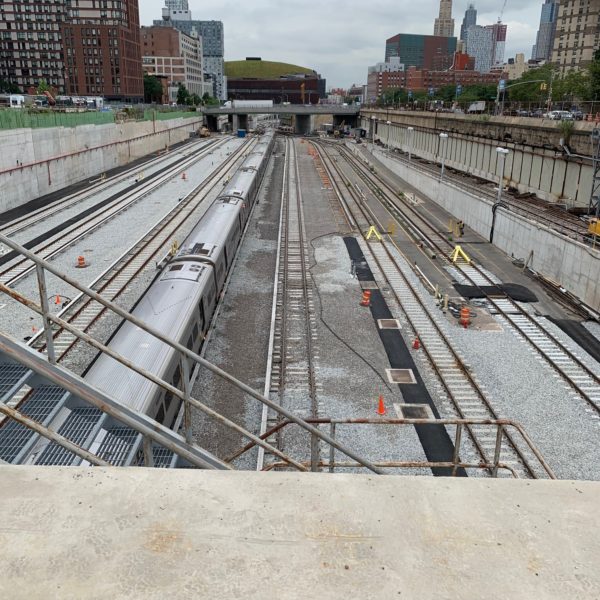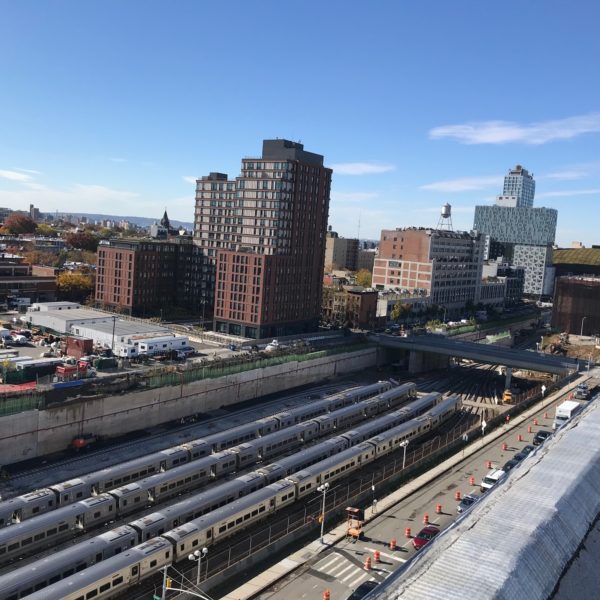Atlantic Yards Stage 3 & 4
Location:
Brooklyn, NY
Client:
Greenland Forest City Partners
Contract Value:
$301 Million
Project Dates:
2014 to 2020
- Complete reconstruction of Long Island Rail Road’s (LIRR’s) Vanderbilt Yard (VD)
- Installation of approximately 2,100 LF of 20’ tall x 3’6” thick retaining wall
- Support of Excavation (SOE) elements installed included: (165) 24” soldier piles, 50,000 sq-ft of timber lagging, (390) hollow bar tie-backs.
- Installation of deep foundation elements including (165) 13-3/8” diameter piles and (104) 24” diameter caissons
- (160) pile caps/footings/piers for future platform overbuild consisting of 25,000+ CY of concrete
- Over 160,000 CY of excavation
- Installation of over four miles of electrical duct bank, new AC&DC traction power substations, (3) 38 KV Transformers, (2) Rectifier Transformers, 5KV Substation, 480V Substation, LIRR MG Set, LIRR CIL Hut to control yard signals, and overhead catenary lighting
- Installation of structural steel for LIRR East & West Portal tunnels and yard access ramp
- Installation of a 4,000 SF modular employee facility building, elevator building, and prefabricated pedestrian bridge
- Installation of over 200 LF of 48” diameter water main
- Installation of (7) new storage tracks
- All work was done within an active railyard and LIRR Atlantic Tunnel.
PROJECT OVERVIEW
This project was the reconstruction of Long Island Rail Road’s Vanderbilt Yard in Brooklyn, New York, and included both deep foundation and utility work. From a structural standpoint, the scope of work entailed the construction of a new west portal into the LIRR Atlantic Tunnel below Atlantic Ave, demolition of approx. 200 linear feet of the existing 115-year-old LIRR Atlantic Tunnel wall to allow for the new west portal entrance, and reconstruction of the existing LIRR east portal. The scope of the project also included the construction of new substations to repower the yard, Atlantic Terminal Station and the LIRR Atlantic Tunnel mainline tracks between East New York and Atlantic Terminal, high & medium voltage duct banks, a new yard signal system integrated with the main line tunnel signal system, new double slip track switches and installation of traction power, signal, lighting & communications lines within the existing LIRR Atlantic Tunnel.
WHAT MADE THIS JOB COMPLEX
The general location of the site, in urban Brooklyn, adjacent to Atlantic Avenue and NYC DOT bridges, made this project geotechnically, operationally and logistically complex. Posillico had to manage the hurdles of ongoing pedestrian traffic and the use of compressed air within proximity of an active railyard, while maintaining the integrity of a 115-year-old LIRR tunnel. In addition, a key requirement of this project was for all construction to be performed while the LIRR Yard remained fully operational. This required several stages of construction as well as extensive coordination with the LIRR to allow the yard to remain active throughout the project, and the workforce to be safe.
HOW POSILLICO SOLVED IT
To maintain a safe environment and run a successful project, Posillico worked with the owner, the construction manager, the design team and the LIRR to redesign the deep foundation layout of the project. The team selected the right specialized tools and equipment based on the geological conditions and used reverse circulation to keep the area clean for the railroad and contain the spoils.
The project also required diligent and professional logistics management with the Barclays Center to limit the impact on pedestrian traffic during events and with the DOT, the LIRR, the power utilities, the infrastructure team, and the signal department to successfully manage the project in an active railyard. The double slip switch installations required a year of preplanning and coordination with LIRR for the two consecutive double-track outages of the Atlantic tunnel main line, which had only ever been done a few times in the 115 years the tunnel has been in use. This required several stages of construction as well as extensive coordination with the LIRR to allow the yard to remain active throughout the project, and the workforce to be safe.

